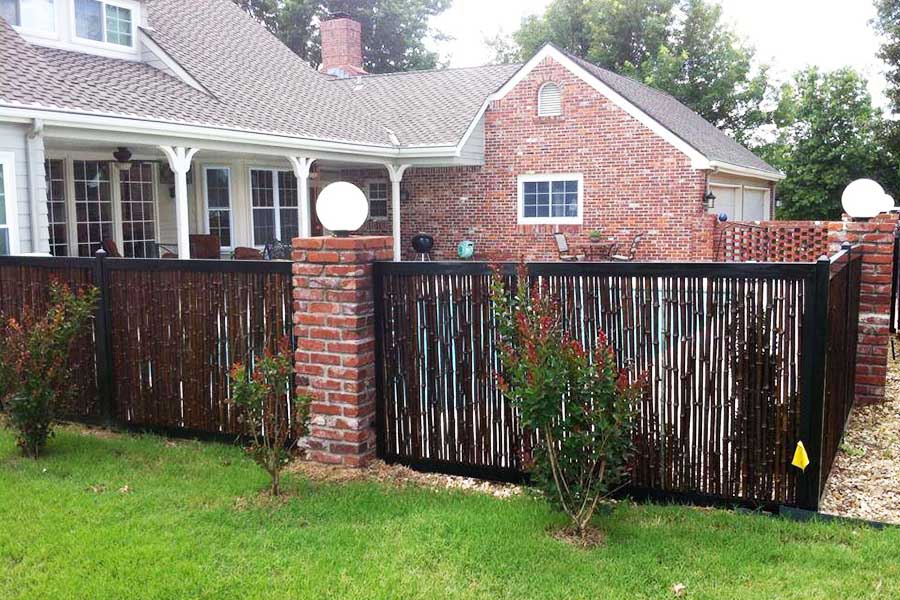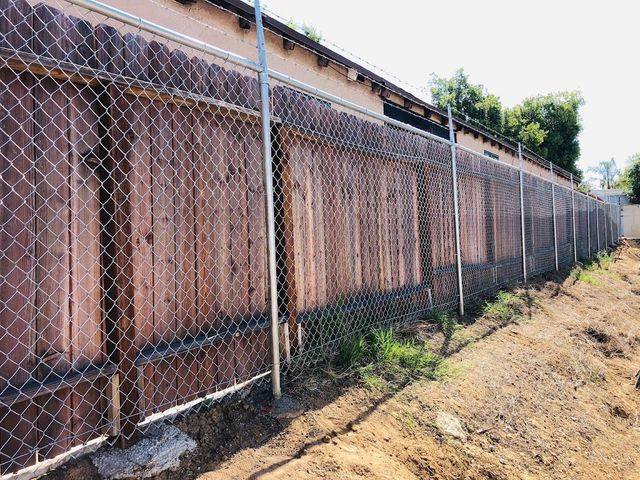All Categories
Featured
When it concerns maintaining a wood fence, property owners typically deal with the decision of whether to discolor or paint. Both choices have their advantages and disadvantages, and the selection eventually depends upon your visual choices, the sort of timber, and just how much upkeep you agree to dedicate to. Here's a comprehensive contrast to assist you make an educated decision.
The Essentials of Painting and Staining
Paint involves covering the timber with a nontransparent layer of color. It supplies complete coverage, concealing the wood grain while using outstanding security versus ecological elements.
Tarnishing passes through the wood, enhancing its all-natural appeal while including a safety layer. Depending on the kind, stains can vary from transparent to strong, enabling varying degrees of timber grain visibility.
Benefits And Drawbacks of Painting
Pros:
Vast Array of Color styles: Paint offers unlimited color options, allowing you to match your fence to your home's exterior or personal design.
Longer Long-term: Top quality exterior paint can last up to 5-7 years, needing much less frequent reapplication.
Superior Protection: Repaint forms a thick, strong obstacle versus wetness, UV rays, and parasites.
Cons:
Peeling Off and Splitting: With time, paint can break or peel off, particularly in areas with extreme weather.
Hides Natural Wood Elegance: If you like the natural grain of timber, paint might not be the very best selection.
Higher Maintenance: Repainting calls for scratching off the old paint, which can be labor-intensive.
![]()
Advantages And Disadvantages of Discoloration
Pros:
All-natural Appearance: Stains maintain and improve the natural elegance of the wood, making it optimal for top notch wood like cedar or redwood.
Easier to Reapply: Unlike paint, spots do not crack or peel. Reapplying tarnish generally calls for less surface area prep work.
Versatile Finish Options: Stains been available in transparent, semi-transparent, and strong selections, supplying various degrees of coverage.
Cons:
![]()
Shorter Life Expectancy: Stains, semi-transparent and specifically clear ones, may need reapplication every 2-3 years.
Limited Shade Options: While stains provide natural tones, they do not have the wide shade combination available with paint.
Less Protective: Stains permeate the wood however don't supply as thick a barrier as paint, making them somewhat less safety versus extreme weather.
Variables to Think About
Visual Preferences: If you desire vibrant colors and total protection, paint is the way to go. For a rustic and all-natural look, go with stain.
Timber Type: Top notch woods with attractive grains take advantage of discoloration, while lower-grade woods can be repainted for a sleek look.
![]()
Environment: In damp or moist environments, paint's thicker obstacle might provide much better security. In moderate or completely dry climates, spots can suffice.
Upkeep Commitment: Painting involves less constant reapplication however even more effort during touch-ups. Discoloration calls for routine maintenance but is less complicated to handle.
Last Thoughts
Both painting and discoloration can efficiently safeguard and improve your wooden fencing. The most effective choice relies on your concerns, whether they favor visual appeals, longevity, or ease of upkeep. By recognizing the benefits and drawbacks of each, you can select the coating that straightens with your requirements and ensures your fencing remains a standout feature of your building for years to come.
The Essentials of Painting and Staining
Paint involves covering the timber with a nontransparent layer of color. It supplies complete coverage, concealing the wood grain while using outstanding security versus ecological elements.
Tarnishing passes through the wood, enhancing its all-natural appeal while including a safety layer. Depending on the kind, stains can vary from transparent to strong, enabling varying degrees of timber grain visibility.
Benefits And Drawbacks of Painting
Pros:
Vast Array of Color styles: Paint offers unlimited color options, allowing you to match your fence to your home's exterior or personal design.
Longer Long-term: Top quality exterior paint can last up to 5-7 years, needing much less frequent reapplication.
Superior Protection: Repaint forms a thick, strong obstacle versus wetness, UV rays, and parasites.
Cons:
Peeling Off and Splitting: With time, paint can break or peel off, particularly in areas with extreme weather.
Hides Natural Wood Elegance: If you like the natural grain of timber, paint might not be the very best selection.
Higher Maintenance: Repainting calls for scratching off the old paint, which can be labor-intensive.

Advantages And Disadvantages of Discoloration
Pros:
All-natural Appearance: Stains maintain and improve the natural elegance of the wood, making it optimal for top notch wood like cedar or redwood.
Easier to Reapply: Unlike paint, spots do not crack or peel. Reapplying tarnish generally calls for less surface area prep work.
Versatile Finish Options: Stains been available in transparent, semi-transparent, and strong selections, supplying various degrees of coverage.
Cons:

Shorter Life Expectancy: Stains, semi-transparent and specifically clear ones, may need reapplication every 2-3 years.
Limited Shade Options: While stains provide natural tones, they do not have the wide shade combination available with paint.
Less Protective: Stains permeate the wood however don't supply as thick a barrier as paint, making them somewhat less safety versus extreme weather.
Variables to Think About
Visual Preferences: If you desire vibrant colors and total protection, paint is the way to go. For a rustic and all-natural look, go with stain.
Timber Type: Top notch woods with attractive grains take advantage of discoloration, while lower-grade woods can be repainted for a sleek look.

Environment: In damp or moist environments, paint's thicker obstacle might provide much better security. In moderate or completely dry climates, spots can suffice.
Upkeep Commitment: Painting involves less constant reapplication however even more effort during touch-ups. Discoloration calls for routine maintenance but is less complicated to handle.
Last Thoughts
Both painting and discoloration can efficiently safeguard and improve your wooden fencing. The most effective choice relies on your concerns, whether they favor visual appeals, longevity, or ease of upkeep. By recognizing the benefits and drawbacks of each, you can select the coating that straightens with your requirements and ensures your fencing remains a standout feature of your building for years to come.
Latest Posts
Discover WyHy FCU – Comprehensive Support for Your Financial Success
Published May 23, 25
1 min read
Explore Brake Repair & More: Comprehensive Repair Options from Montclare Auto Repair
Published May 22, 25
1 min read
Why Consistent Auto Maintenance at Montclare Auto Repair Reduces Costs
Published May 22, 25
1 min read
More
Latest Posts
Discover WyHy FCU – Comprehensive Support for Your Financial Success
Published May 23, 25
1 min read
Explore Brake Repair & More: Comprehensive Repair Options from Montclare Auto Repair
Published May 22, 25
1 min read
Why Consistent Auto Maintenance at Montclare Auto Repair Reduces Costs
Published May 22, 25
1 min read